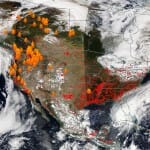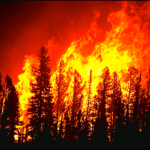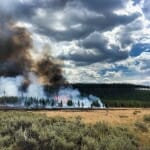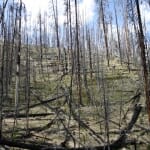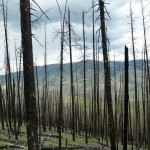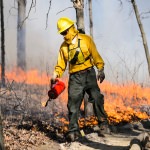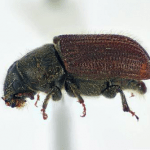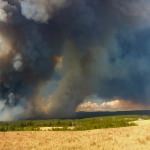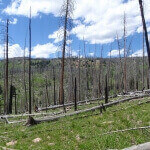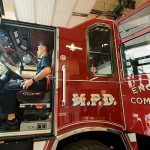Tag Fire
One-minute data from UW helps NASA detect wildfires faster
Researchers at UW–Madison's Space Science and Engineering Center are delivering up-to-the minute satellite data to NASA to assist efforts tracking and monitoring wildfires.
Cellular networks vulnerable to wildfires across U.S.
More than 430,000 cell network transceivers covering approximately 85 million people are in areas the U.S. Forest Service considers at moderate or high wildfire risk.
Is fire the new normal in the American West?
In a video, Professor Monica Turner and her research team and colleagues explore how the patterns of fire and recovery are changing, particularly as the climate warms and drought becomes more common.
Prescribed fire season starts at Arboretum, preserve
The spring prescribed fire season is underway at the UW–Madison Arboretum and the campus’s Lakeshore Nature Preserve, and several fires are planned for Wednesday, March 28.
Variable tree growth after fire protects forests from future bark beetle outbreaks
Researchers say forest managers may want to consider promoting this natural variability to help protect forests from the insects.
Thrive or fail: Examining forest resilience in the face of fires
“It’s not only western forests where these things matter, where disturbances and changing environments shape regional landscapes,” says Wisconsin researcher Monica Turner.
UW and Madison Fire Department co-hosting Campus Fire Safety Month
The University of Wisconsin–Madison's Environment, Health & Safety department, in partnership with University Housing and the Madison Fire Department, will host the first UW–Madison Campus Fire Safety Month in September.
Full-scale emergency exercise planned for July 17
The Emergency Management Unit of the UW–Madison Police Department, along with support from university, city, county, state, and federal agencies will hold a full-scale exercise on Thursday, July 17th.
‘Bucky’s House’ helps keep campus safe
The bond between the University of Wisconsin–Madison campus and the firefighters at Fire Station No. 4 on Monroe Street, just across from Camp Randall Stadium, is a strong and valued one.
Small fire in Chamberlin Hall quickly extinguished
A small electrical fire caused the evacuation of Chamberlin Hall Friday afternoon at the University of Wisconsin–Madison.
Crisis fund helps students get back to normal
No one expects their home to go up in flames, but that’s what happened to the residents of the Casa Blanca Apartments on Sunday, Nov. 10. Some residents left their apartments unsure of when they would be able to return, or whether their possessions might be damaged beyond repair.
Fire on Old University Ave. displaces students
The Dean of Students’ Office is leading efforts to assist approximately 50 University of Wisconsin–Madison students affected by an overnight structural fire near campus.
Annual Security and Fire Safety Report available for download
Dean of Students Lori Berquam sent the following message to campus on Oct. 1, 2013: Members of the UW–Madison Community: In the past few weeks,…
Campuswide fire drills scheduled this week
Students, faculty and staff are encouraged to listen for and participate in campus building fire/building evacuation drills taking place today through Thursday across campus.
Dean of Students Office responds to Lakelawn fire
After a structural fire in the Langdon St. neighborhood caused an estimated $125,000 in damage, the University of Wisconsin–Madison community is reaching out to assist those displaced by the fire.
Update: Prescribed burns in nature preserve to begin Wednesday
Prescribed burns will begin taking place this Wednesday in the Lakeshore Nature Preserve near the western edge of the UW–Madison campus.

